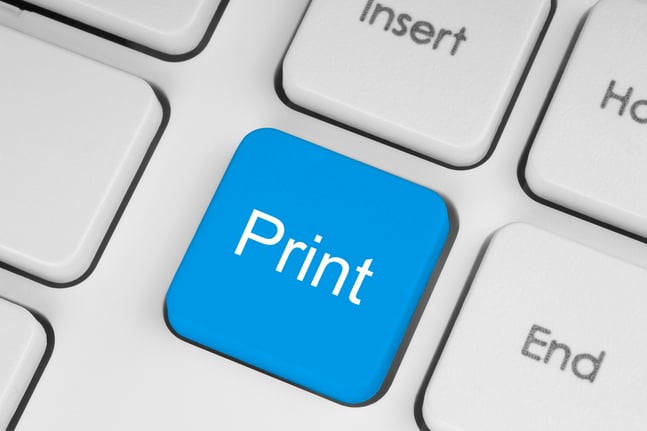Why Print Will Never Die
While the summer days are behind us, vacation has provided an opportunity to let go and enjoy ourselves in different ways. For many, it has meant spending time elsewhere with family and friends - the kind of experience where you want to capture the moments. And that we do.

The smartphones are omnipresent and during my vacation I noticed that everyone was taking pictures. But how many people print those pictures? The nature of the digital world has us sharing them via social media, but it’s not that often we take the time to print those memories. Some of us do, but most of us just keep them stored in the cloud and let them be. Photographs, on the other hand, are concrete and tangible. You can touch and feel them. Despite their degradation, they represent a point in time, they carry nostalgia, and they become a record of permanence that makes them feel important.
Email is akin to taking digital pictures. It’s easy and inexpensive and we can create and send lots of them. Although email gives us greater flexibility and reach, it just doesn’t carry the same gravitas as getting a letter in the mail.
In the NonProfit Times article ICYMI: Understanding Brain Triggers and Giving, by Geoffrey W. Peters, Mr. Peters states “fMRI tests show how our brains process paper-based and digital marketing in different ways. Paper ads caused more emotional processing. A USPS study with Temple University showed subjects processed digital ads more quickly but had stronger emotional response to physical ads and remembered them better. Physical ads stimulated the part of the brain associated with value and desire for featured products.” He goes on to say, “when providing a full-fledged proposal for a major gift, use heavier paper and a thick cover. It promotes the sense of gravitas and is viewed by recipients as more serious.” This seems like common sense, but sometimes we lose track of these finer points.
We live in a world where both print and electronic media coexist. Yes, print may wane while digital grows, but that is the nature of new trends and their cycles. However, the more expensive print becomes, the more valuable it will be perceived. This research illustrates what we innately know or at least feel. There is a larger difference between paper and digital than we may have realized. The physical aspect of touching and seeing is a different experience than just seeing. This is why all marketing programs need to utilize a blend of print and digital media. Print will never die.


Submit a Comment